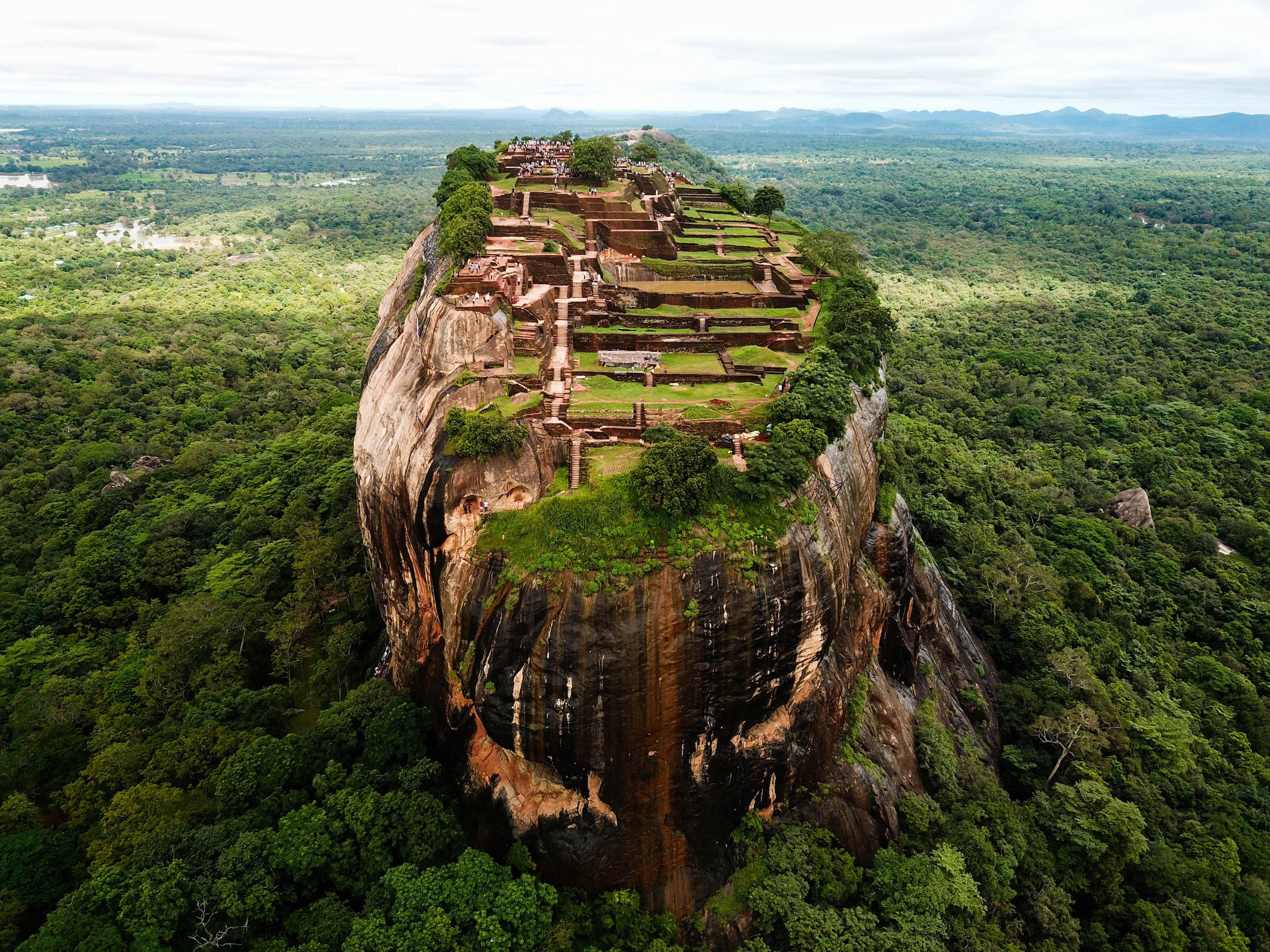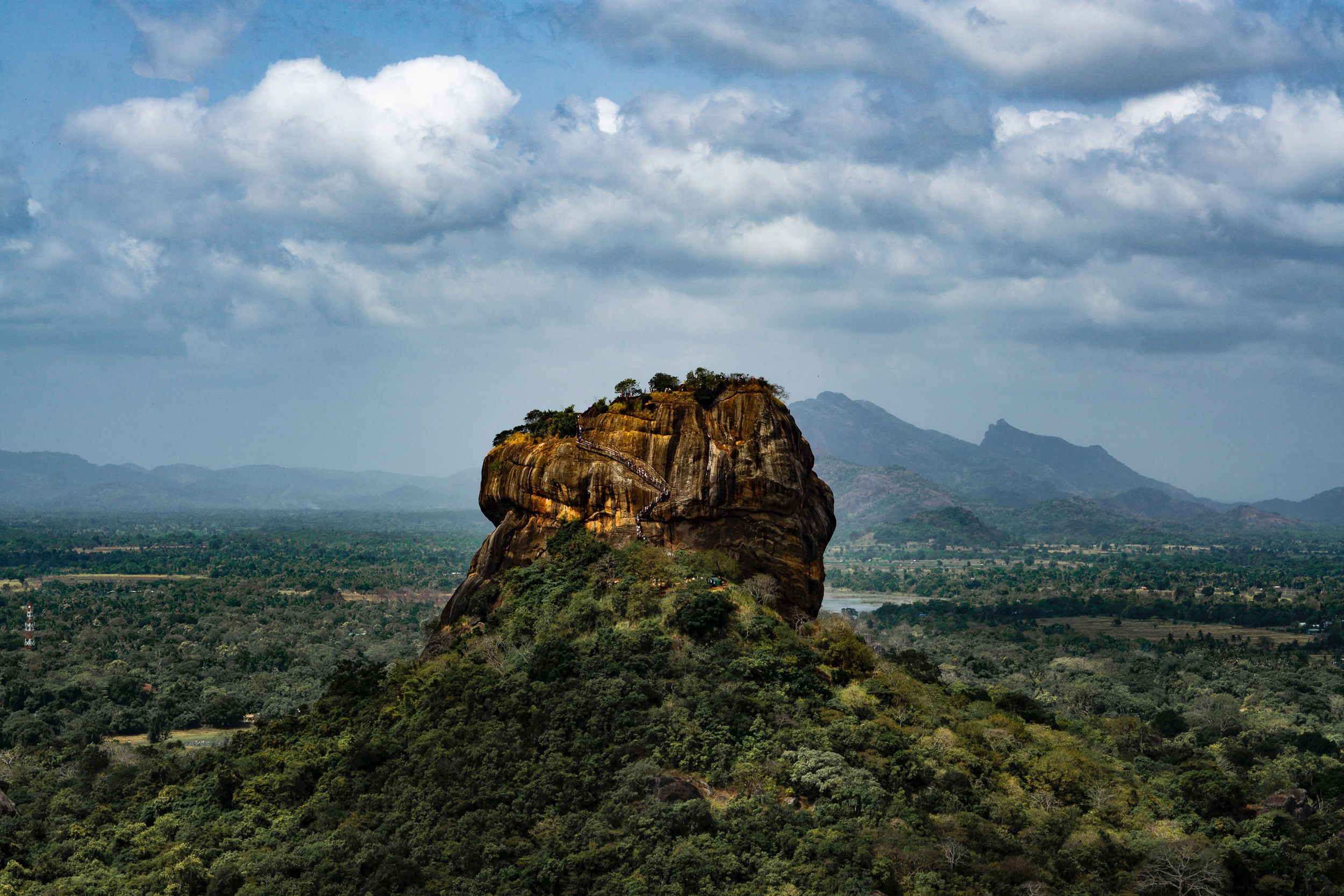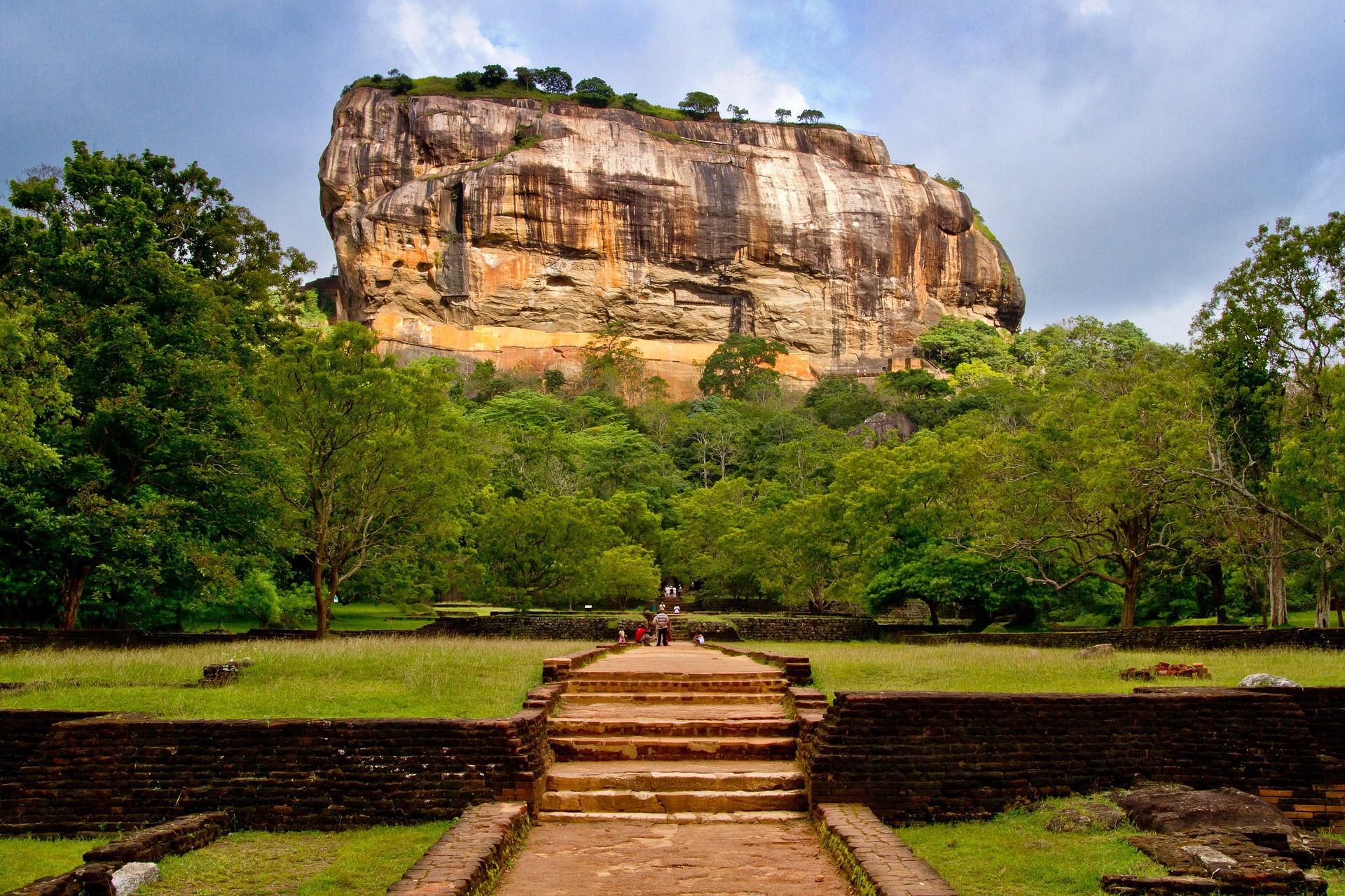
Sigiriya, also known as Lion Rock, is an ancient rock fortress located in the northern Matale District of Sri Lanka. It was built by King Kasyapa in the 5th century AD, and it is now recognized as a UNESCO World Heritage site.The history of Sigiriya dates back to the late 5th century, when King Kasyapa, who was afraid of an attack from his half-brother and rightful heir to the throne, Moggallana, decided to build a new capital on the top of the Sigiriya rock. The king moved his capital to Sigiriya and built a palace and fortress on the summit of the 200-meter-high rock.

The fortress was built using advanced engineering techniques, including hydraulic systems to provide water to the palace at the top of the rock. The palace was surrounded by beautiful gardens, including water gardens, which added to the beauty of the fortress.One of the most remarkable features of Sigiriya is the Mirror Wall, which is a polished surface that was once so reflective that it is said the king could see himself in it. Visitors to the site can still see the ancient graffiti and inscriptions left by visitors who came to Sigiriya over the centuries.The fortress was abandoned after the death of King Kasyapa, and it was later used as a Buddhist monastery until the 14th century. During this time, many frescoes were painted on the rock face, depicting beautiful women known as the Sigiriya Maidens. These frescoes are considered some of the most significant ancient art in Sri Lanka

In 1831, the British archaeologist John Still rediscovered Sigiriya, and extensive restoration work has been carried out over the years to preserve the site. Today, Sigiriya is one of the most popular tourist attractions in Sri Lanka and attracts visitors from all over the world.Overall, Sigiriya is an incredible architectural feat and a testament to the skill and ingenuity of the ancient Sri Lankan people. Its stunning beauty, rich history, and fascinating architecture make it a must-see destination for anyone visiting Sri Lanka.
